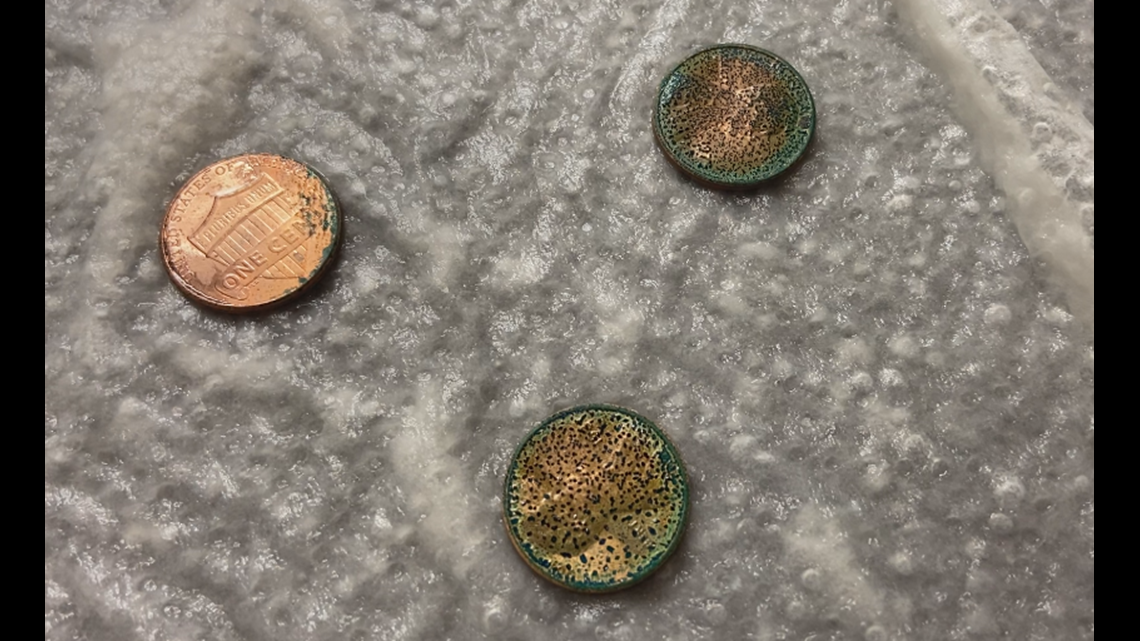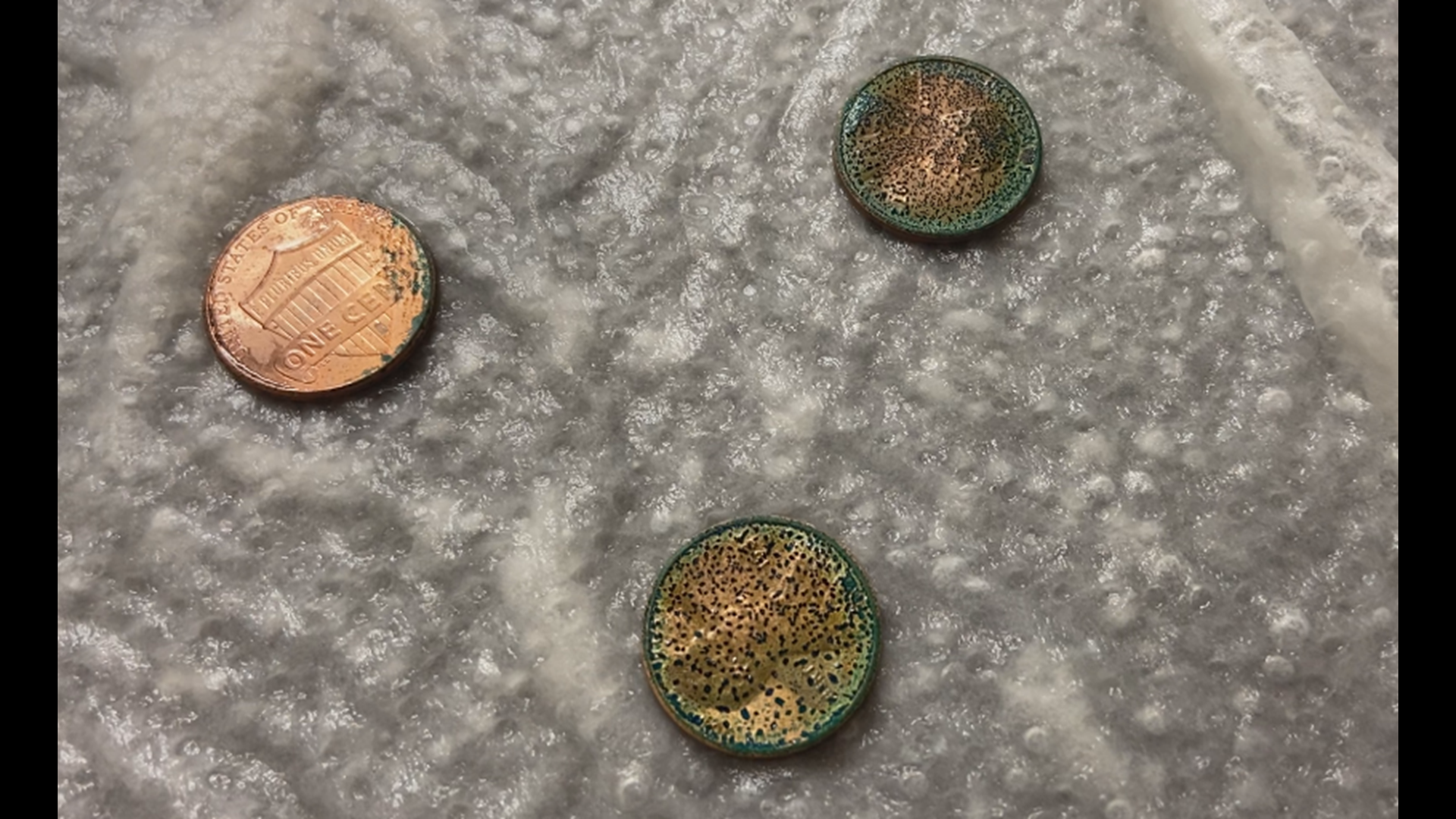COLUMBIA, S.C. — This experiment is a chemistry experiment that involves a reaction between copper and oxygen, also know as an oxidation reaction.
To do this experiment, you will need:
- pennies
- a sheet or bowl
- white vinegar
- paper towel
The setup for this experiment is pretty simple. You want to line your cookie sheet or bowl with paper towels, I double lined it! Then, place your pennies on the paper towel. Finally, pour vinegar over the pennies and make sure the paper towels their sitting on are completely saturated.
Next, we wait! You will need some patience with this experiment. While it will be a bit smelly from the vinegar, it's best to wait multiple hours to a few days to see the best results. Have your students take observations every few hours to record any changes you see!
After some time, you should notice the pennies turning green!


How did this happen?
Pennies are made of copper. When copper is exposed to oxygen, it forms molecules called copper oxide that make pennies look dirty. Pouring vinegar over the pennies helps break up this copper oxide and expose the pure copper on the penny. As the penny dries and is exposed to the air, a chemical reaction occurs and the penny turns green! The green compound is called malachite.
You may notice that not all of your pennies turn green. This usually has to do with the age of your pennies. Prior to 1982 pennies were made of copper. After 1982, they were made with only 2.5% copper and coated with zinc, so there are not as many copper molecules exposed to do this reaction.
The most famous example of this chemical reaction is with the Statue of Liberty. When the statue arrived in New York in the late 1800s, the statue was a dull brown color because the outside is made of copper. Over time, the copper reacted with the air and slowly turned the entire statue malachite green!

